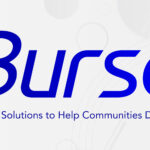Many nonprofit organizations receive federal grants directly or as pass-through funds. It is usually upon receiving their first federal award that they delve into 2 Code of Federal Regulations (CFR) Part 200, the Uniform Administrative Requirements, Cost Principles, and Audit Requirements for Federal Awards for the first time. And “they” is often only one or two people because, let’s face it, it is not exactly a page-turner. Receipt of federal grants may also be when nonprofits first develop indirect cost rates.
2 CFR Part 200 contains requirements for allocating costs to federal and nonfederal awards
Nonprofit agencies develop indirect cost rates and allocation methodologies to maximize cost recovery. Typically, the rate is calculated by determining the staff salaries + fringe benefits + related non-salary costs that support the entire organization and dividing these costs by the total salaries of programmatic staff, or staff that spend their time working only on specific grants and direct activities. A programmatic activity is defined as an activity that is supported by a federal, state, local, or private grant, or an activity that is funded by a fee that is charged by the agency. It may also be defined as
an activity that is not in support of the entire agency. These are the “whys” in a nonprofit—the activities that comprise an organization’s mission.
There is often staff that work on multiple activities. These activities can include both indirect functions that support the entire organization and those that are in support of grant, fee-based activities, or other initiatives. To calculate an appropriate indirect cost rate, this staff must track time spent on each function. Federal grants require that agencies comply with regulations 2 CFR Part 200. While agencies may use alternative methods for allocating staff cost, there are few options when the staff perform varied activities. Any method used must correspond to the level of effort spent on each activity.
Otherwise, the agency runs the risk of over or undercharging its funding sources. Nonprofits often fall into the trap of focusing only on federal grants and do not apply cost principles holistically across the entire organization. In addition to being out of compliance, nonprofits cannot prove they accurately charged federal grants if they excluded non-federal activities from calculations. Exclusion of certain activities also understates the cost of providing non-grant-funded services. It also is rare that grants cover the entire cost of a function or program. Certain grants will not allow for indirect
costs at all, certain indirect costs, or have caps. Nonprofits usually must make up the difference with their own funds. As a result, organizations need to be familiar with the distinctions between allocating and charging.
Nonprofits want to focus on their mission. And they should. But good infrastructure and fiscal discipline ensure that each nonprofit will continue to fill its mission for years to come. Cost allocation plans and indirect rates should be thought of as more than a “have to.” First, a good offense is often the best defense. Mistakes and misinterpretations happen. But the consequences are far less when proper documentation, procedures, and processes are in place. Second, these processes help nonprofits to understand the cost of doing business and make sound business decisions.
A solid cost allocation, indirect cost rate, and related fiscal practices help an
organization to withstand growth, contraction, staff turnover, changes in funding
sources, and pandemics
Organizations have varying levels of resources. Some use outside help to set up processes such as indirect cost rates and then maintain them on their own. Perhaps they use outside help every few years to ensure continued compliance or as major changes occur. Most recognize that this area is one they cannot afford to ignore, and thus they contract for annual expertise. It is important that an organization understand its in-house strengths and determine the level of outside assistance it needs.
Some of you might have heard about the de minimis rate. CFR 2 Part 200 allows certain organizations to use a 10% indirect cost rate in lieu of preparing an indirect cost rate or cost allocation plan under certain conditions, including if the organization does not have an approved indirect cost rate and receives less than $35 million annually in direct federal funds. Using the de minimis might be an administratively simple solution. It is also unlikely to identify the true cost of programs and may lead to reduced revenue recovery.
Nonprofit staff often wear many hats, especially at smaller organizations. It is important that all staff have a basic understanding of general accounting principles, especially when federal grants are involved. It is also important that organizations are realistic about their capabilities. Processes must be in place to capture all time if staff work on multiple activities. It is also important that fee-based, free, and non-indirect activities that are not grant-funded are treated in the same way as programs that are grant-funded. The costs associated with these activities must be allocated their fair share of indirect
costs even if it is only an accounting exercise to ensure that federal and pass-through funds are not overcharged. Good cost allocation processes will ensure that the revenue is there to support the nonprofit’s endeavors.
Our experts assist nonprofits to calculate rates, understand federal regulations, review time tracking processes, and understand how to negotiate with state and federal reviewers. These tasks can be foreign to a nonprofit new to federal grants, or accounting staff from other industries. Once in place, these processes can be maintained and yield multiple benefits to nonprofits to provide services to their clients. They are especially important as nonprofits receive funds from the CARES Act and American Rescue Plan.










